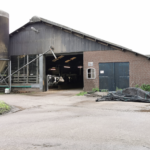(Photo Credit: jplenio1 @ Freepik)
By Floor Fleurke, Tilburg University
On February 20th, the Trilogue on the Regulation for a Certification Framework for Carbon Removal (CRCF) came to a successful end as the Parliament, Council, and Commission reached agreement on a final legal text.[1] The CRCF, proposed by the European Commission in 2022, sets out to create a unified certification scheme for carbon dioxide removals (CDR) and reductions.[2] The objective of the proposal is to encourage the development of carbon removal technologies and sustainable carbon farming solutions. This is necessary to meet the EU’s commitment under the Paris Agreement to reach GHG net neutrality by 2050.[3] The CRCF is heralded as the blueprint for credible certification Regulation for carbon removal technologies but as will be discussed below this credibility rests entirely on the exercise of the delegated powers by the Commission. This delegation arguably goes beyond the constitutional powers conferred by the Treaty of the Functioning of the EU (TFEU) and its interpretation by the Court of Justice of the EU (CJEU).
Scope of the CRCF
The CRCF is voluntary but the idea is that regulated criteria for certification create a golden standard for participation and minimizes the risk of greenwashing. Certified carbon removal and soil emission reduction activities can thereby generate corresponding units (one unit being equal to one metric tonne CO2 equivalent of certified net benefit generated by one of the carbon removal or soil emission reduction activities). The credits can only be used for the EU’s climate objectives and nationally determined contribution (NDC) and not to third countries’ NDCs and international compliance schemes. The CRFC is not linked to the EU ETS but it is suggested that its coherence with Directive 2003/87/EC and Directive (EU ETS) should be kept under review.[4]
The Regulation covers atmospheric or biogenic[5] carbon removals. Importantly, although the title of the Regulation suggests otherwise, the scope also covers carbon reductions.[6] This has been controversial as there is a risk that these will not lead to real reductions aimed at achieving the
‘Carbon removal activities’ defines three types of carbon removal, being any process or practice which enhances carbon capture in or reduces carbon release from a biogenic carbon pool (carbon farming); results in permanent carbon storage or; ensures long-lasting atmospheric or biogenic carbon storage in products or materials. Carbon Farming is defined in the Regulation as any practice or process, carried out over an activity period of at least five years, related to terrestrial or coastal management and resulting in capture and temporary storage of atmospheric and biogenic carbon into biogenic carbon pools or the reduction of soil emissions.[7] Examples are carbon and nitrous oxide reductions from soil management, and activities that must overall reduce the carbon emissions of soils or increase carbon removals from biological matter (examples of activities are wetland management, no tilling and cover crop practices, reduced use of fertilizer combined with soil management practices, etc.).This is important as there currently exists no coherent EU policy regarding agricultural emissions or carbon farming.[8] Under current political conditions (i.e. famers protests across Europe protesting EU rules with significant impacts such as the withdrawal of the EU Sustainable Use Regulation for pesticides) direct regulation of agricultural emissions seem unlikely. the certification of carbon farming, in contrast, aligns with a global trend of growing offset carbon markets.[9] It remains unclear, however, how exactly CRCF certificates can be used to make climate claims (no reference to the CRCF is made in the proposal for the Green Claims Directive) in the absence of a compliance market. Nor is it clear how the risk of the same removals counting twice – in private and public registries – is to be addressed.
The Regulation does not cover activities that reduce agricultural emissions from enteric fermentation and manure management (livestock) even though these emissions make up almost 80 percent of all agricultural GHG emissions in the EU. However, by 2026, the Commission must produce a report on the feasibility of certifying activities that result in the reduction of emissions other than those related to soils (carbon and nitrous oxide).
Certification criteria
At the core of the Regulation lie four overarching criteria that carbon removal activities need to meet in order to be certified: quantification, additionality, long-term storage and sustainability. To be certified, carbon removal activities must meet these requirements (Article 3 in conjunction with Articles 4 to 7). For most on-farm technologies and practices of carbon farming, the permanence of any carbon sequestered is extremely difficult to guarantee, Sequestered carbon in agricultural soils, for example, can be easily released into the atmosphere when a farmer changes tillage methods at some later point in the future.
Regarding the criteria of ‘long term’ storage, it is stipulated that temporary carbon storage from carbon farming and soil emission reduction activities must last at least five years to be certified.[10] Hence, the carbon would be considered released at the end of the monitoring period indicated on the certificate.
The certification criteria need to be further transposed into certification methodologies for each different type of carbon removal activity to be adopted by the Commission – assisted by an expert group – by way of delegated decision making.
Monitoring and liability
Monitoring obligations and liability rules for operators should further ensure that the four core criteria are upheld. Liability rules should address cases of reversal and the consequences of incomplete or interrupted monitoring and non-compliance by the operators during the monitoring period, for example through collective buffers or accounts of carbon removal units, and up-front insurance mechanisms. The Commission is also tasked to establish a common and transparent electronic EU-wide registry four years after the entry into force of the regulation to make information on the certification and units publicly available and accessible, including certificates of compliance and summaries of certification audits. Until then, certification schemes under the framework must provide public registries based on automated and interoperable systems.
The Commission is empowered to flesh out the above mentioned obligations. For this purpose, Articles 8, 12 and 15 of the Agreement Regulation lay down the provisions granting the Commission power to adopt delegated acts. The scope, duration and procedure for adopting these delegated acts is provided in Article 16, and includes a power to revoke the delegated power at any time by the European Parliament or by the Council.
Article 8 empowers the Commission to supplement the Regulation by adopting delegated acts to establish certification methodologies for each activity, such as to carbon farming activities. Article 12 requires the Commission to set up and maintain an EU wide registry for permanent carbon removals, carbon farming and carbon storage in products and make available the information related to the certification process. Article 15 empowers the Commission to adopt delegated acts to amend Annex II, which lists the minimum information that must be included in certificates.
Adopting delegated acts has the advantage that it does not have to go through the time-consuming legislative procedure[11] and allows the Commission to respond rapidly to changing circumstances. According to Article 290 of the Treaty on the Functioning of the EU (TFEU), which governs powers delegated to the Commission, delegation of power cannot relate to essential elements of the basic legislative act, meaning that the Commission is only allowed to adopt delegated acts that supplement or amend non-essential elements.
The European Court of Justice (CJEU) defines essential elements as ‘acts which are intended to give concrete shape to the fundamental guidelines of Community policy’. These entail ‘political choices falling within the responsibility of the EU legislature’ that require ‘the conflicting interests at issue to be weighed up on the basis of a number of assessments’. [12] Furthermore, the Court has held that when the Commission uses the power to supplement, its authority is limited, in compliance with the entirety of the legislative act as adopted by the legislature to develop in detail the non-essential elements of the legislation in question that the legislature has not specified. [13] The assessment to ascertain which elements of a matter must be categorized as essential must be based on objective factors amenable to judicial review.[14] According to the Court, these objective factors are inter alia whether the rules entail political choices falling within the responsibilities of the EU legislature as they either require the balancing of interest or involve possible interference with fundamental rights.[15]
Accordingly, the question arises if the matters over which delegated powers are granted to the Commission in Articles 8, 12 and 15 of the CRCF Regulation constitute essential elements of that act in the sense that it requires the exercise of political discretion.
Zooming in on the certification methodologies, Article 8 (2a) of the CRCF specifies that the certification methodologies adopted by delegated acts shall (a) ensure the robustness and transparency of carbon removals and soil emission reductions; (b) promote the protection and restoration of biodiversity and ecosystems; (c) contribute to ensuring the Union’s food security and avoiding land speculation; (d) take into account the competitiveness of farmers and foresters in the Union in a sustainable manner, particularly for small-scale operators; (e) minimize the administrative and financial burden for operators, particularly for small-scale operators, keep the certification process as simple as possible, and easy to use; (f) ensure that cases of reversal are addressed through appropriate liability mechanisms such as collective buffers or up-front insurance mechanisms and as a last resort direct cancellation of units. In the case of carbon farming activities, it is added that the Commission shall take into account whether the activities contribute to sustainable management of agricultural land.
Annex I subsequently lists the elements that need to be included when adopting delegated acts pursuant to Article 8. These include, for instance, rules for calculating baselines and LULUCF[16] soil emissions, and additionality tests. It also includes (a) rules on monitoring and mitigation of any risk of release of stored carbon as well as monitoring rules (b) rules on the duration of storage, (c) liability and (d) validity of removal credits.
These concepts and considerations are highly ambiguous and remain ill-defined in the CRCF agreement. For example, the baseline for carbon farming (Article 4(2)) and the requirement for additionality. Additionality is one of the more complex aspects of a carbon pricing scheme as it makes it necessary to find a balance between ensuring stringent requirements while still maintaining consistent uptake at the project owner level. Research has shown that this is by no means a technical matter of fleshing out points of detail where all the essentials have been laid down in the primary Regulation. Instead it is well documented that this entails a highly contextual exercise that can comprise very different and contested approaches.[17] Article 5 has included the standard of additionality (that directly follows the baseline standard) to mean that the activity needs to go beyond EU and national requirements at the level of the individual operator but this still needs to be operationalized by the Commission in the certification methodologies.[18]Another clear example is the appropriate liability mechanism mentioned in Article 6(2)(3): the operator(s)shall be liable for any reversal of the carbon captured and stored by an activity, occurring during the monitoring period. Similarly, soil emission reduction activities must be subject to appropriate monitoring rules and liability mechanisms as set out in the delegated acts adopted pursuant to Article 8. No distinction is made, however, between liability for carbon removal and reduction, and liability schemes are not further circumscribed. Research into different carbon markets shows that there is a wide range of liability options, from simply discounting carbon removal units, to the requirement of buffer installment and up-front insurance mechanisms.[19]
In the exercise of this considerable delegated power, the Commission will be assisted by the Climate Change Committee.[20] For the preparation of the delegated acts, the Commission is further aided by the Expert Group on Carbon Removals. Given the importance of getting the delegated acts right, the composition and the transparency of these groups are crucial for the effectiveness of the certification credits. The Expert Group is relatively numerous and diverse: it consists of 70 members, of which 22 representatives of industry, 12 from ngo’s, and 4 representatives of Academia or independent think thanks. Regarding transparency, all relevant documents are to be made available except if it is deemed that disclosure of a document would undermine the protection of any public or private interest as defined in Article 4 of Regulation 1049/200111.[21] Considering its wealth of experience in comitology and delegated decision-making, it could be argued that the EU – and the Commission for that matter – is well equipped to adopt expertise driven delegated acts in complex matters that are in urgent need of executive decision-making. However, given the diversity of activities that are brought under the CRCF, encompassing both removal and reduction activities, and the wide range of issues that still needs to be addressed, it is hard to see how the technical will be not become political and the political not technical isolating it from the democratic forum.
[1] The provisional agreement will now be submitted to the member states’ representatives in the Council (Coreper) and to the Parliament’s environment committee.
[2] Interinstitutional File: 2022/0394(COD); European Commission, Proposal for a Regulation of the European Parliament and of the Council establishing a Union certification framework for carbon removals.
[3] See https://ec.europa.eu/commission/presscorner/detail/en/ip_21_6687
[4] Recital 30.
[5] Biogenic carbon pool means living biomass, litter, dead wood, dead organic matter, mineral soils and organic soils as set out in points (a) to (f) of Part B of Annex I to Regulation 2018/841;
[6] See Agreement (n. 2), Article 2(1)(aa).
[7] Article 2(1)(h).
[8] J. Verschuuren (2022). Achieving agricultural greenhouse gas emission reductions in the EU post-2030: What options do we have? Review of European, Comparative & International Environmental Law, 31(2), 246–257; Macintosh, A., & Waugh, L. (2012). An introduction to the carbon farming initiative: Key principles and concepts. Crawford School of Public Policy.
[9] Ecosystem Marketplace, ‘Markets in Motion. State of the Voluntary Carbon Markets 2021, Installment 1’ (2021) 9–14
[10] Article 2(1)(h).
[11] European Parliament resolution of 25 February 2014 on follow-up on the delegation of legislative powers and control by Member States of the Commission’s exercise of implementing powers (2012/2323 (INI)), para 7.
[12] See e.g. Case C-286/14 Parliament v Commission (‘Connecting Europe Facility’) [2016] ECLI:EU:C:2016:83, para. 42; Case C‑355/10 European Parliament v Council of the European Union [2012] CLI:EU:C:2012:516; C-696/15 Czech Republic v Commission [2017] ECLI:EU:C:2017:595 and C-363/14 Parliament v. Council [2015] ECLI:EU:C:2015:579.
[13] Case C-286/14, para 41
[14] Ibid.
[15] Case C- 355/10, para. 76-77.
[16] Regulation (EU) 2018/841 of the European Parliament and of the Council of 30 May 2018 on the inclusion of greenhouse gas emissions and removals from land use, land use change and forestry in the 2030 climate and energy framework, and amending Regulation (EU) No 525/2013 and Decision No 529/2013/EU [2018] OJ L 156/1.
[17] See eg, Kevin Anderson, ‘The Inconvenient Truth of Carbon Offsets’ (2012) 484 Nature 7; Eva Lövbrand, ‘Bridging Political Expectations and Scientific Limitations in Climate Risk Management – On the Uncertain Effects of International Carbon Sink Policies’ (2004) 67 Climatic Change 449
Anderson, K., Buck, H.J., Fuhr, L. et al. Controversies of carbon dioxide removal. Nat Rev Earth Environ 4, 808–814 (2023). https://doi.org/10.1038/s43017-023-00493-y
[18] Article 5(2).
[19] See for an overview and comparison between voluntary offset markets: https://www.offsetguide.org/understanding-carbon-offsets/carbon-offset-programs/mandatory-voluntary-offset-markets/
[20] Established Regulation (EU) 2018/1999, article 44(1)(a).
[21] Commission Decision establishing horizontal rules on the creation and operation of Commission expert groups, C(2016) 3301 final, Article 26(2).



